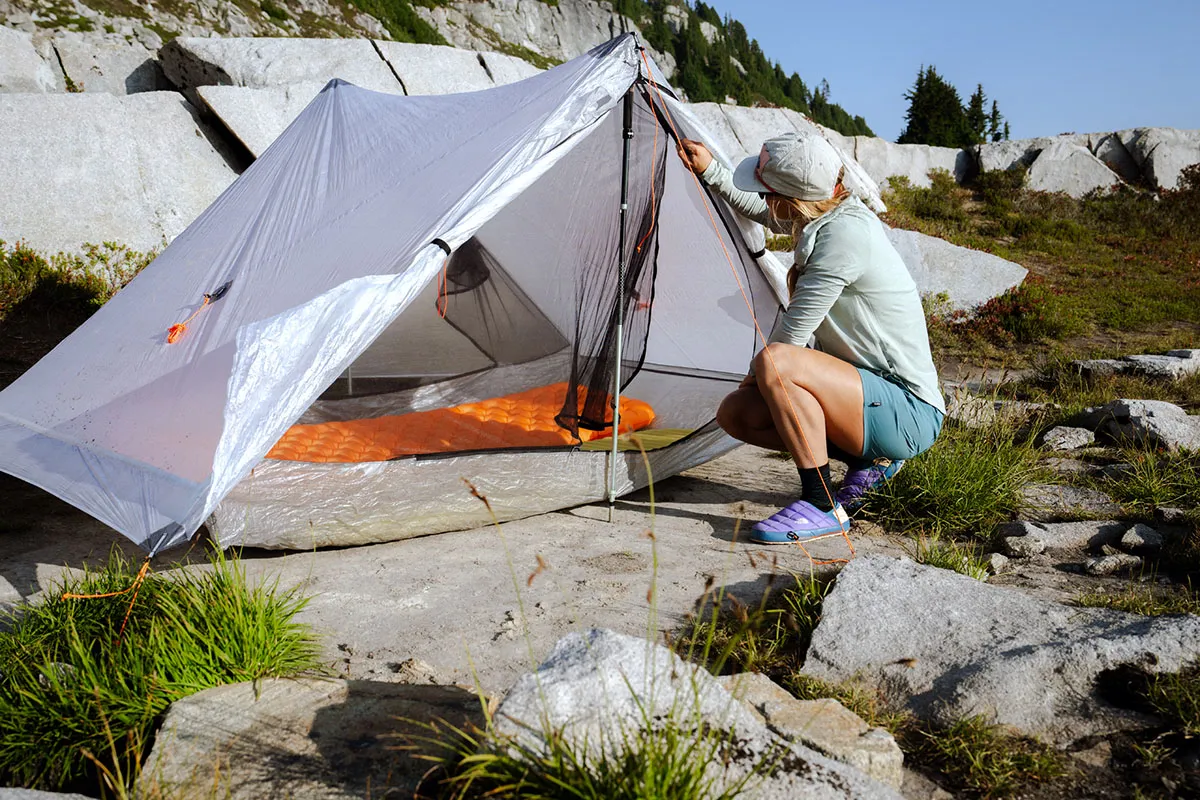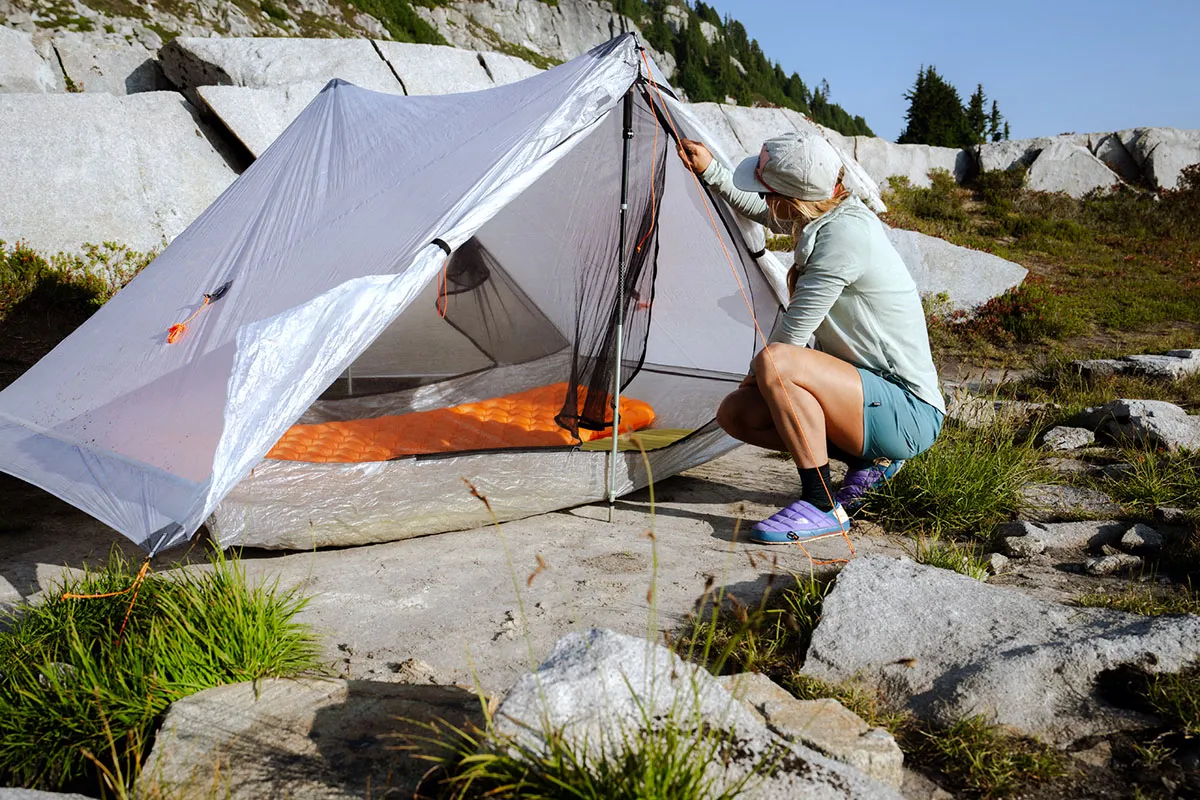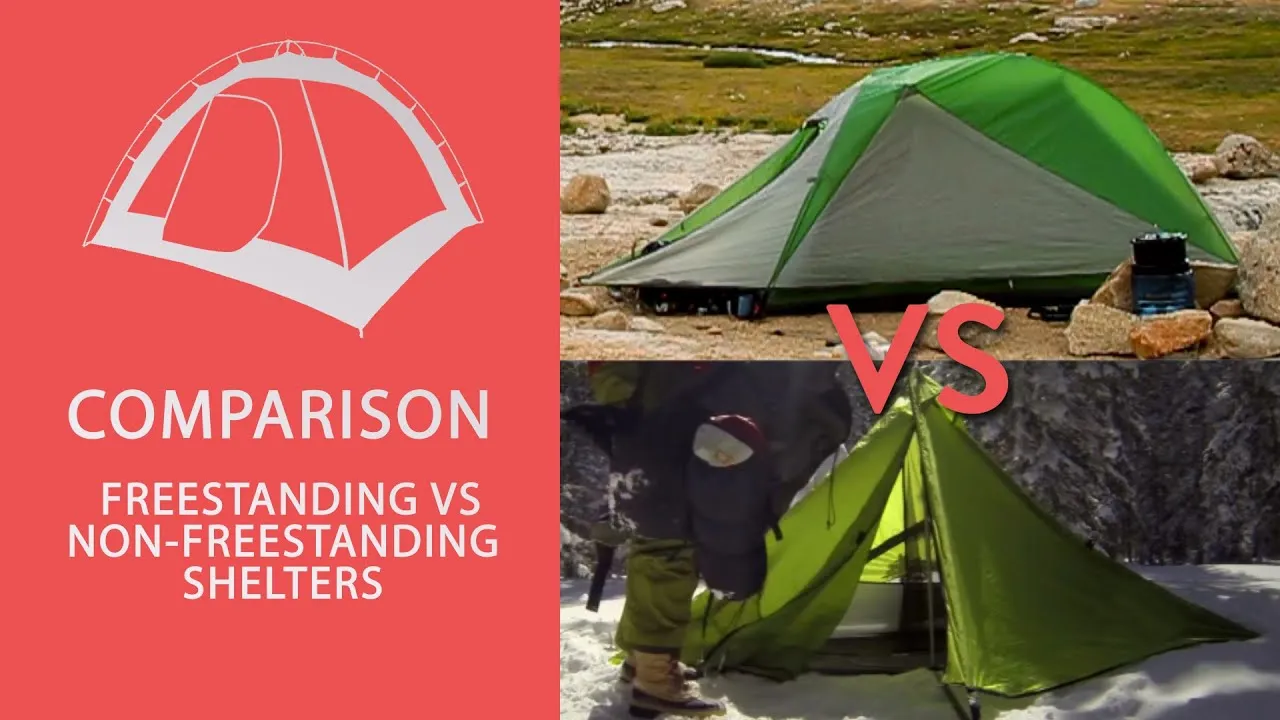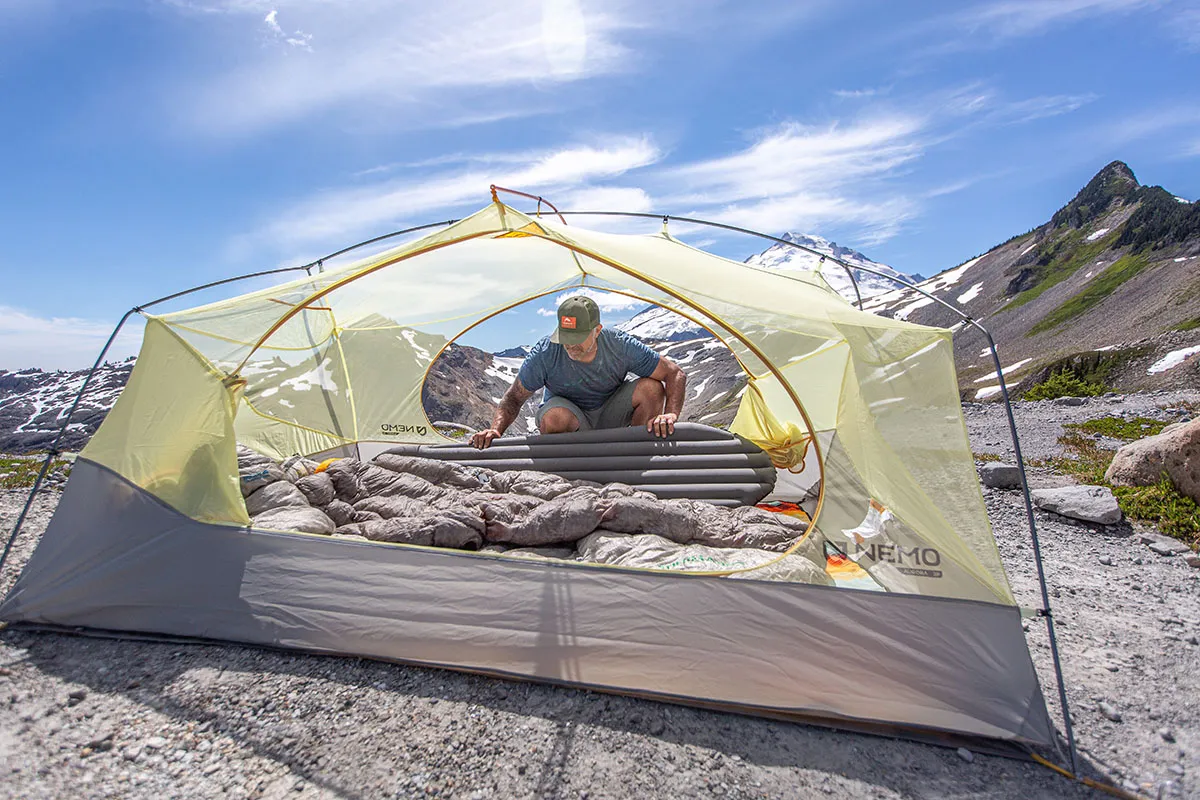
Non Freestanding Tent: The Ultimate Guide to Ultralight Backpacking Shelters
Discover everything you need to know about non freestanding tent options for ultralight backpacking. From setup techniques to product recommendations, this comprehensive guide covers the essential aspects of choosing and using these lightweight shelters for your outdoor adventures. Whether you're a seasoned thru-hiker or just starting your ultralight journey, understanding the benefits and challenges of non freestanding tent designs will help you make informed decisions for your next backcountry expedition. Visit NatureGuests.com for more outdoor gear insights.
Understanding Non Freestanding Tents
A non freestanding tent represents a fundamental shift in backpacking shelter design, prioritizing weight reduction and packability over traditional convenience features. Unlike their freestanding counterparts, these innovative shelters require external support systems such as trekking poles, guy lines, and strategic staking to maintain their structural integrity. This design philosophy has revolutionized ultralight backpacking, allowing adventurers to carry significantly less weight while maintaining essential weather protection.

The core principle behind a non freestanding tent design lies in its dependency on tension and external anchor points. These shelters utilize a combination of trekking poles as primary support structures, strategic guy line placement, and ground stakes to create a stable, weatherproof shelter. This approach eliminates the need for heavy aluminum or carbon fiber tent poles, resulting in substantial weight savings that serious ultralight backpackers have embraced.
Most modern non freestanding tent designs employ either a single-wall or double-wall construction. Single-wall designs integrate the rainfly and tent body into one piece, maximizing weight efficiency but potentially compromising ventilation. Double-wall systems, like those found in premium models, offer superior condensation management through separate inner and outer layers, though they typically add modest weight to the overall package.
The evolution of non freestanding tent technology has been driven by advances in fabric technology, particularly the development of Dyneema Composite Fabric (DCF) and ultralight silnylon materials. These fabrics provide exceptional strength-to-weight ratios while maintaining waterproof performance, enabling manufacturers to create shelters that weigh less than two pounds while still offering reliable protection from the elements. For those interested in comparing different tent styles, you might also want to explore ***freestanding tent ultralight*** options to understand the trade-offs between different design philosophies.
Key Advantages of Non Freestanding Tents
Exceptional Weight Savings
The primary advantage of any non freestanding tent is the dramatic weight reduction achieved by eliminating dedicated tent poles. Most quality options weigh between 1-2 pounds, compared to 3-4 pounds for equivalent freestanding models.
Compact Pack Size
Without bulky tent poles, a non freestanding tent packs down to remarkable compactness, often fitting easily into a backpack's side pocket or small stuff sack, leaving more room for other essential gear.
The weight advantage of a non freestanding tent extends beyond mere numbers on a scale. For long-distance hikers covering 15-20 miles daily, every ounce matters significantly. The reduced pack weight translates to less fatigue, faster hiking speeds, and decreased stress on joints and muscles. Many thru-hikers report that switching to a non freestanding tent was one of the most impactful gear upgrades they made during their journey.
Beyond weight considerations, non freestanding tent designs often offer superior interior space efficiency. The A-frame or tunnel-style geometry maximizes usable floor space while maintaining structural integrity. Many models provide surprisingly generous headroom and living space despite their minimalist design approach. This efficiency becomes particularly valuable when spending extended periods inside the shelter during bad weather.
Expert Tip: Multi-Purpose Equipment
Since your non freestanding tent uses trekking poles for support, you're essentially getting double duty from this essential hiking equipment. This multi-use approach exemplifies the ultralight philosophy of every item serving multiple purposes.
The setup speed advantage of a quality non freestanding tent becomes apparent once you've mastered the technique. Experienced users can pitch many models in under three minutes, often faster than complex freestanding alternatives. This quick setup proves invaluable during sudden weather changes or when arriving at camp after dark. The streamlined design philosophy eliminates unnecessary complexity while maintaining essential functionality.
Setup and Pitching Techniques
Mastering the setup process for a non freestanding tent requires understanding the fundamental principles of tension-based shelter construction. The process begins with site selection, which becomes more critical than with traditional freestanding designs. Look for relatively flat terrain with good drainage, away from potential hazards like widow makers or flood-prone areas. The ground should be firm enough to hold stakes securely but not so rocky that stake placement becomes impossible.
Critical Setup Considerations
- Ground conditions must allow for secure stake placement
- Trekking pole height adjustment affects shelter stability
- Guy line tension must be balanced for optimal performance
- Weather direction should influence door orientation
The typical setup sequence for a non freestanding tent follows a logical progression that ensures proper tension distribution. Start by laying out the shelter on the ground with doors facing your preferred direction, usually away from prevailing winds. Stake out the corners first, ensuring the floor is taut but not overstretched. Then insert and adjust your trekking poles to the correct height, which varies by model but typically ranges from 42-48 inches for most designs.

Guy line management represents perhaps the most critical aspect of non freestanding tent setup. These lines provide lateral stability and help manage fabric tension under varying weather conditions. Most quality models include pre-attached guy lines with line locks or tensioning hardware. The key is achieving balanced tension - tight enough to prevent fabric flutter but not so tight that the shelter becomes overstressed in wind. Practice adjusting these lines in calm conditions before facing challenging weather.
Advanced users develop site-specific adaptation techniques for their non freestanding tent setup. On rocky terrain where stakes won't penetrate, experienced backpackers use rock anchors or deadman techniques with available materials. Sand camping requires specialized stakes or sand anchors, while snow camping demands different approaches entirely. These adaptation skills separate confident users from those who struggle with challenging conditions. Learning to work with various terrains makes your shelter truly versatile.
Challenges and Limitations
While the advantages of a non freestanding tent are compelling, honest evaluation requires acknowledging the challenges these shelters present. The most significant limitation involves site selection constraints. Unlike freestanding tents that can be placed almost anywhere, your non freestanding tent requires stakeable ground and appropriate space for guy lines. This restriction can prove problematic in heavily used camping areas, on hard surfaces, or in densely forested locations where guy line placement becomes difficult.
Common Challenges
- Site selection becomes more critical and limiting
- Setup complexity increases in challenging conditions
- Condensation management requires more attention
- Dependence on trekking poles limits flexibility
The learning curve associated with non freestanding tent use represents another significant consideration. Unlike freestanding tents that essentially set up the same way every time, these shelters require developing site-specific skills and judgment. New users often struggle with achieving proper tension, understanding guy line adjustment, and adapting to different ground conditions. This learning process typically takes several trips to master, during which setup times may be longer and results less optimal.
Weather sensitivity presents another challenge for non freestanding tent users. While these shelters can handle severe weather when properly set up, they require more active management than freestanding alternatives. Wind direction changes may necessitate guy line adjustments, and the shelter's performance depends heavily on proper initial setup. Some users find this active management stressful, particularly during their first few experiences with challenging weather conditions.
The condensation characteristics of many non freestanding tent designs, particularly single-wall models, require understanding and management. Without the airspace provided by double-wall construction, these shelters can experience more condensation buildup, especially in humid conditions or when cooking inside. Users must develop strategies for ventilation management and moisture control to maintain comfort throughout the night. For those considering alternatives, exploring ***semi-freestanding tent*** options might provide a middle ground between convenience and weight savings.
Top Product Recommendations
Budget-Friendly Option
LANSHAN Ultralight Tent
An excellent entry-level non freestanding tent that offers impressive value. This 2-person shelter weighs just 2.2 pounds and provides reliable weather protection at an affordable price point.
Premium Choice
Big Agnes Copper Spur HV UL2
While technically semi-freestanding, this model represents the pinnacle of lightweight design. It offers exceptional build quality and weather resistance for serious backpackers.
Professional Grade
MSR Hubba Hubba
Renowned for exceptional build quality and weather performance. This shelter represents the gold standard for serious backpackers who demand reliability in challenging conditions.
Ultralight Champion
NEMO Hornet Elite
The ultimate ultralight solution, offering exceptional weight savings without compromising essential features. Perfect for weight-conscious backpackers seeking maximum performance.

When selecting your ideal non freestanding tent, consider your specific use case and experience level. Beginners often benefit from starting with more affordable options to learn the fundamentals before investing in premium models. The learning curve is real, but the weight savings and performance benefits make the investment worthwhile for serious backpackers. Those interested in exploring broader tent categories might also consider ***2-person non-freestanding tent*** options for shared adventures.
The market for non freestanding tent options continues evolving rapidly, with manufacturers constantly improving materials, designs, and features. Current trends favor hybrid approaches that combine the weight benefits of non-freestanding designs with some convenience features of traditional tents. This evolution reflects the growing sophistication of the ultralight backpacking community and their demand for high-performance equipment that doesn't compromise on essential functionality.
Expert Recommendation
For those new to non freestanding tent use, I recommend starting with a double-wall design that offers more forgiving condensation management. Once you've mastered the setup and management techniques, consider upgrading to a single-wall ultralight model for maximum weight savings. The learning curve is worth the long-term benefits in pack weight and hiking performance.
Remember that your non freestanding tent is just one component of your complete shelter system. Consider complementary gear such as quality stakes, guy line management tools, and possibly a separate groundsheet for added protection. The total system weight and functionality matter more than individual component specifications. This holistic approach ensures optimal performance and durability throughout your backpacking adventures.
Conclusion
The non freestanding tent represents a significant evolution in backpacking shelter technology, offering compelling advantages for weight-conscious adventurers willing to master their setup and management requirements. These shelters have transformed the ultralight backpacking experience, enabling longer distances, reduced fatigue, and more enjoyable wilderness adventures. The weight savings alone justify the learning curve for most serious backpackers, while the improved pack organization and setup efficiency provide additional benefits.
Success with a non freestanding tent depends largely on understanding your specific needs, developing proper setup skills, and choosing appropriate models for your experience level and typical camping conditions. While these shelters aren't suitable for every situation or every backpacker, they offer unmatched advantages for those willing to invest the time in mastering their nuances. The learning process itself often deepens one's understanding of shelter principles and outdoor skills generally.
The future of non freestanding tent technology looks promising, with continued innovations in materials, design, and hybrid approaches that address traditional limitations while maintaining core advantages. As more backpackers discover the benefits of ultralight travel, these shelters will likely become increasingly sophisticated and user-friendly. The community of users continues growing, creating valuable resources for learning and improvement.
Whether you're contemplating your first non freestanding tent purchase or looking to upgrade your current shelter, the key lies in honest assessment of your priorities, skills, and typical camping conditions. These shelters reward preparation, practice, and patience with exceptional performance and weight savings that can transform your backpacking experience. The investment in learning proper techniques pays dividends in enhanced outdoor adventures and reduced pack weight for years to come. For those exploring different tent styles, consider browsing ***Free Zip 2P freestanding tent*** options as well to understand the full spectrum of available shelter solutions.
Ready to explore more outdoor gear insights?
Visit NatureGuests.com for comprehensive reviews, buying guides, and expert recommendations on the latest outdoor equipment and adventure gear.

